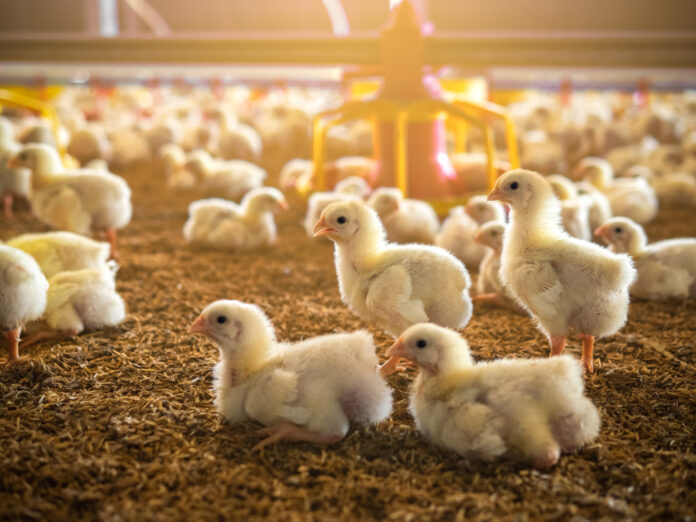Agriculture production value grew 2.1 percent in the first quarter of the year as all subsectors posted improvements, according to the Philippine Statistics Authority.
At constant 2018 prices, this was equivalent to P428.69 billion.
The livestock subsector contributed 14.4 percent or P61.66 billion at constant 2018 prices, the biggest increase in value at 4.1 percent.
Hog production improved 5.1 percent to 437.99 metric tons from 416.72 MT and cattle by 1.9 percent to 54.89 MT from 52.89 MT. Other contributors such as dairy, goat and carabao posted declines.
At current prices, the value of livestock production amounted to P92.86 billion, up 3.2 percent from last year.
Poultry subsector production of P64.95 billion stood 3.2 percent higher at constant 2018 prices for the quarter and accounted for 15.1 percent of total agricultural output.
The performance of the subsector was pushed by growth in the production of chicken, chicken eggs and duck eggs, leaving duck as the only segment with decreased production.
Chicken production reached 470.21 MT from 455.04 MT, a 3.3 percent growth while chicken eggs hit 175.73 MT from 170.97 MT equivalent to a 2.8 percent increase.
The value of poultry production also went up 18.3 percent to P88.90 billion at current prices.
The 1.7 percent growth in crops subsector output at constant 2018 prices followed, equivalent to P247.77 billion and accounted for 57.8 percent or more than half the output value of the country’s agriculture and fisheries.
Increases in production were noted for palay at 5.2 percent to 4.78 million MT from 4.54 million MT, and corn at 3.2 percent to 2.52 million MT from 2.44 million MT.
Growth were also recorded for tobacco, onion, cassava, cabbage, abaca, tomato, mango, coconut, coffee, ampalaya and banana.
However, declines in production were recorded for sugarcane, sweet potato, rubber, potato, pineapple, mongo, cacao, eggplant and calamansi.
At current prices, the subsector grossed P306.5 billion, 14 percent higher than last year’s gross receipts.
The fisheries subsector posted the lowest improvement with its 0.3 percent growth in output value at constant 2018 prices. It contributed P54.32 billion or 12.7 percent of total agricultural output.
Production increases were observed for squid, tilapia, alimasag, milkfish, matangbaka, yellowfin tuna, grouper and skipjack.
Meanwhile, declines were recorded for mudcrab, bigeye tuna, frigate tuna, sapsap, tiger prawn, bisugo, alumahan, talakitok, galunggong, tunsoy, tamban and seaweed.
At current prices, the subsector grossed P81.68 billion, up 25.1 percent from last year’s gross earnings for the period.
Amid all the increase, the value of the country’s entire agricultural production at current prices also went up 14.1 percent to P569.94 billion.
Raul Montemayor, Federation of Free Farmers (FFF) national manager, said the three-month agriculture performance only appears significant due to so-called low base impact.
“We’re coming from a very low base, because in the first quarter of 2022, output declined by 0.3 percent compared to the first quarter of 2021. So, compared to the low output in the first quarter of 2022, it appears that there was a significant growth in the first quarter of 2023,” Montemayor said.
“In fact, we just got back to approximately 2021 output levels for crops, fisheries actually declined when compared to 2021. Only poultry and livestock grew, but these sectors were coming from low output levels due to African swine fever and other animal disease outbreaks,” he added.
Should government continue relying on imports to augment supply, local farmers and fisherfolk would then have no incentive to expand production and increase output.
Danilo Fausto, Philippine Chamber of Agriculture and Food Inc. (PCAFI) president, said the first-quarter performance of agriculture and fisheries present possibilities.
PCAFI said the production outlook include livestock, poultry and fisheries but expressed that the country will still be forced to resort to import “for any shortage which may be caused by the upcoming El Niño and calamities.”
Jayson Cainglet, Samahang Industriya ng Agrikultura (SINAG) executive director, said the improved agricultural output, especially for crops, resulted from recent efforts encouraging farmers to ramp up production, including the National Food Authority decision to buy palay at P21 per kilo and cash subsidies from the government.







